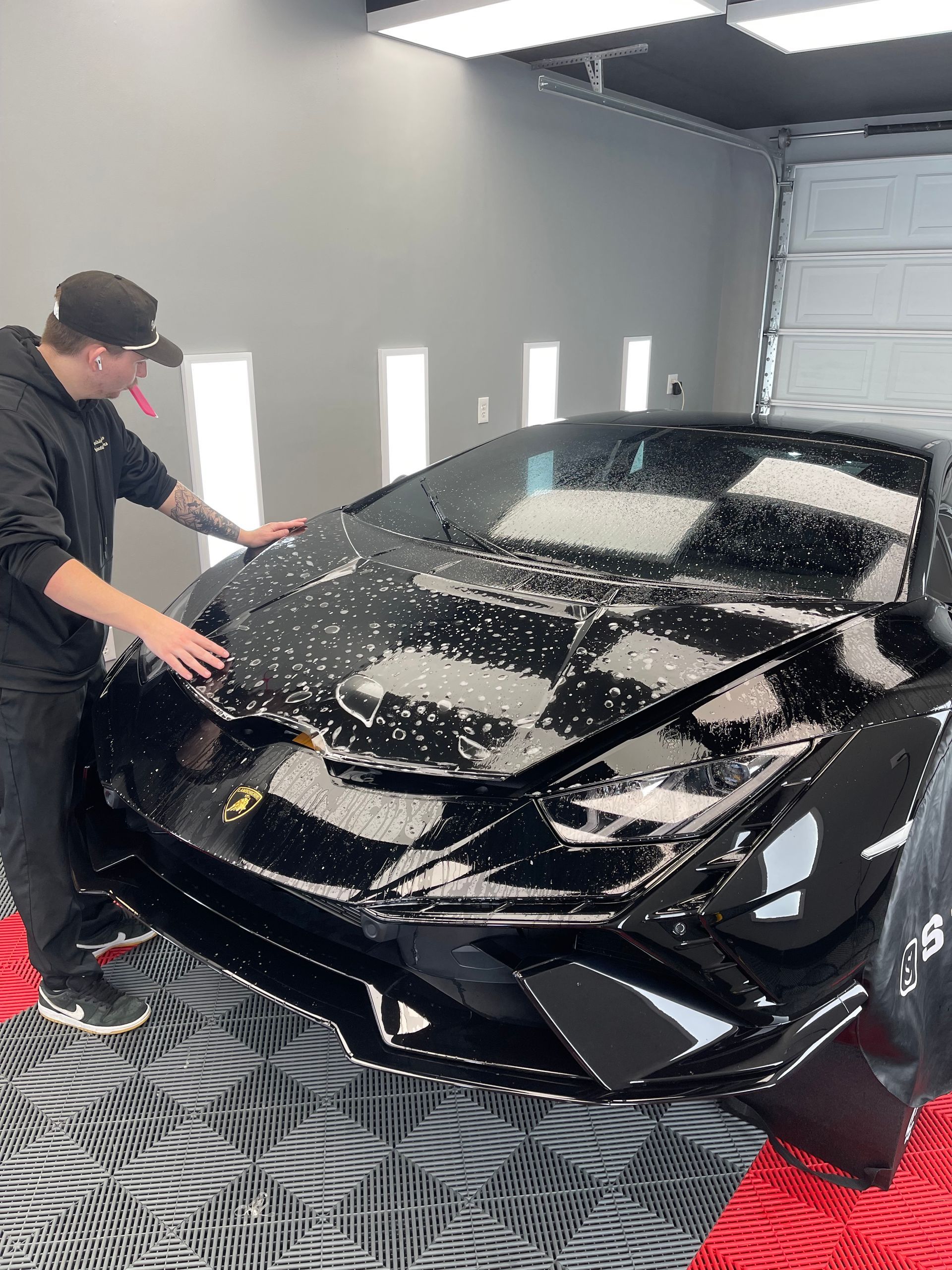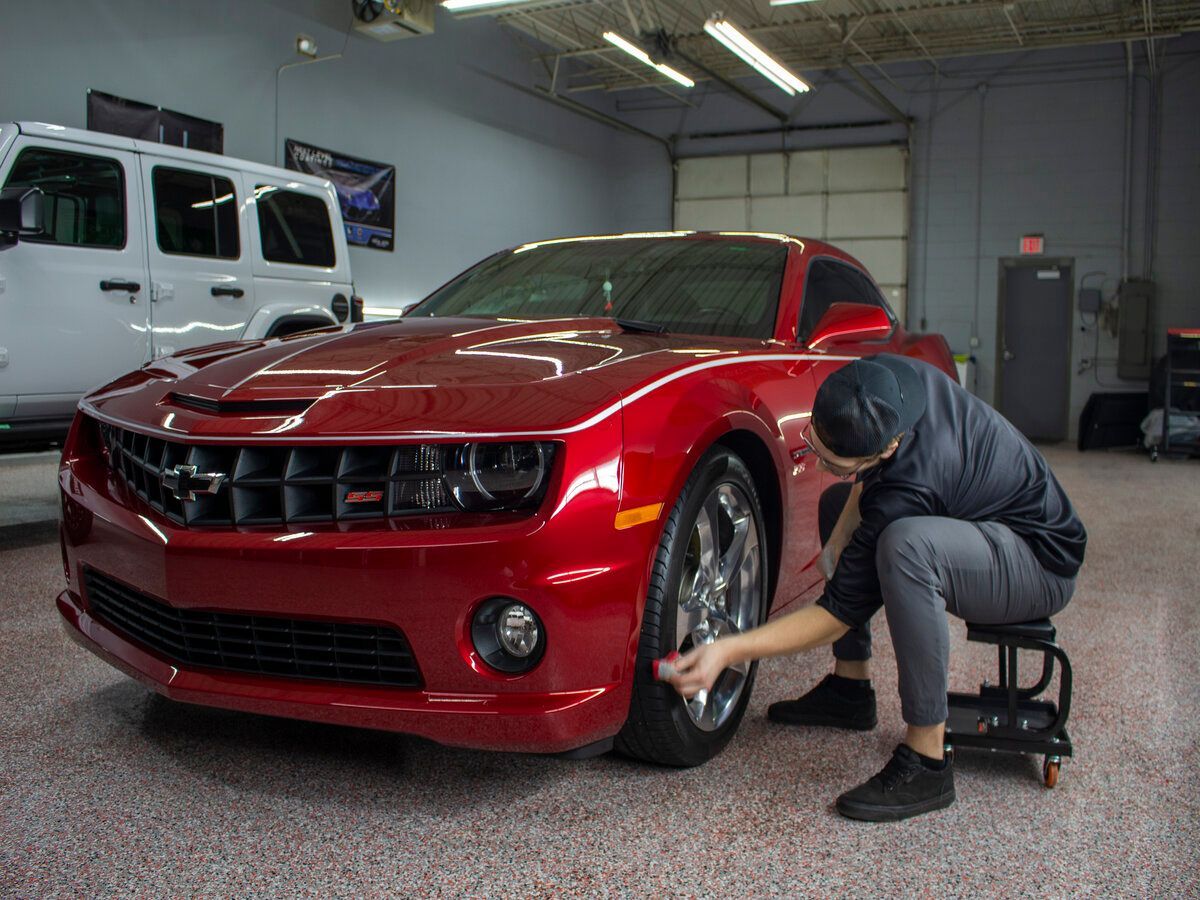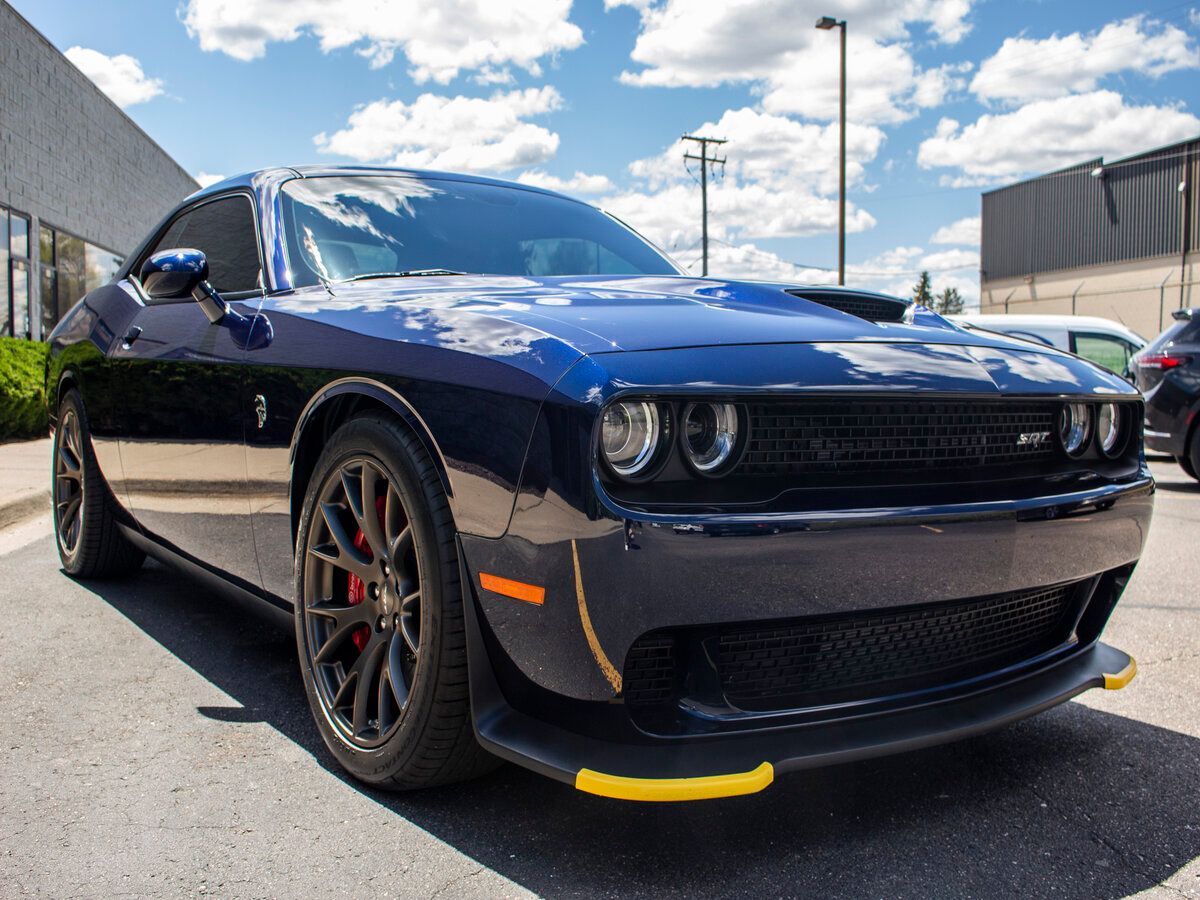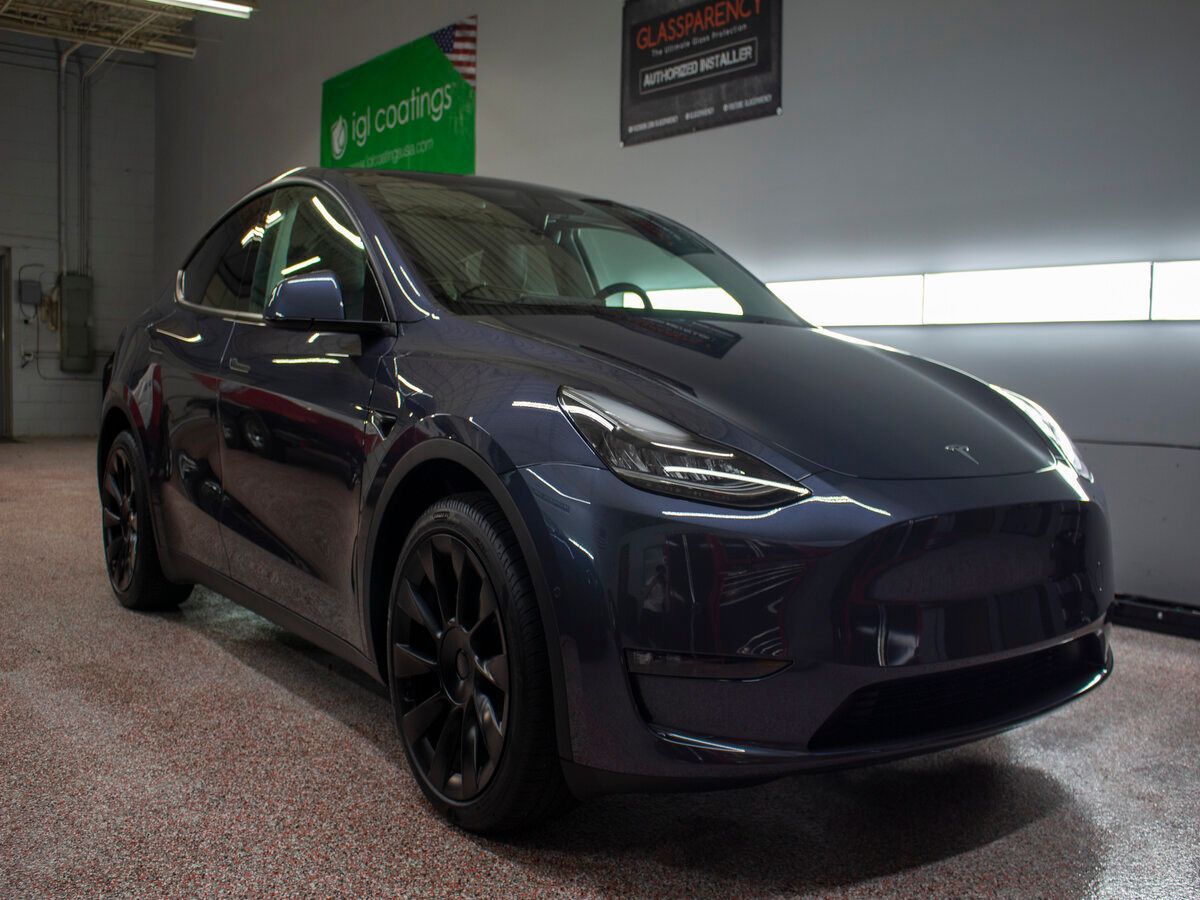How to Protect Your Car's Paint Protection Film
GET A FREE ESTIMATECALL (248) 550-4363
Investing in paint protection film (PPF) for your car was a smart move. PPF provides an invisible armor that shields your car's paint from a myriad of potential threats, including rock chips, road debris, bird droppings, and UV rays. However, in order for your PPF to continue to function properly, it must be properly maintained. In this blog, we'll explore the best practices and tips for protecting your car's PPF, extending its lifespan, and keeping your vehicle looking pristine.
Preparing Your Car for Film Installation
Before applying paint protection film to your vehicle, it's crucial to prepare it properly to ensure the best results. This preparation phase involves a series of steps that will help create a clean and smooth surface for the film installation. By taking the time to prepare your car adequately, you'll not only enhance the adhesion of the film but also optimize its performance in protecting your vehicle's paintwork.
One of the initial steps in preparing your car for film installation is to thoroughly wash it using a mild automotive detergent. This will assist in removing any grime, debris, or contaminants from the surface. Pay particular attention to dirt-prone areas, such as the lower portions of the vehicle and the wheel wells. During this procedure, use a soft sponge or microfiber cloth to avoid scratching the paintwork.
Once your vehicle has been thoroughly cleaned, it is necessary to thoroughly dry it before continuing. Water droplets remaining on the surface can impede the distribution of the film and result in suboptimal results. Use a clean microfiber towel or air blower to carefully dry all areas of your car, ensuring there are no remaining moisture spots.
Subsequently, inspect your vehicle for any preexisting flaws, such as scratches, dents, or chipped paint. These flaws should be addressed before applying the film, as they can affect its appearance and durability. Consider consulting a professional automotive technician who can provide expert guidance and carry out the necessary repairs.
Assessing the vehicle's body and surfaces prior to film application
Before proceeding with installing paint protection film on your vehicle, it's vital to thoroughly evaluate its body and surfaces. This assessment serves several purposes: identifying vulnerable areas that would benefit from additional coverage, ensuring proper alignment and fitment of the film, and identifying any potential issues that may arise during the installation process.
Start by visually inspecting the exterior of your vehicle, paying special attention to vulnerable areas such as the front bumper, bonnet, fenders, side mirrors, and door edges. Look for existing chips, scratches, or other forms of paint damage that might require extra attention or touch-ups. By addressing these beforehand, you can ensure a seamless application of the film.
Additionally, assess the condition of the surfaces where the film will be applied. Make sure they are smooth and free from contaminants like wax residue or silicone-based products. Any substance lingering on the surface can affect the adhesion of the film. If necessary, use a specialized surface preparation solution that the film manufacturer recommends to gently clean these areas.
As part of this assessment process, take note of any complex body contours or challenging areas on your car's exterior. These details will help both you and your installer anticipate potential difficulties during the film installation. It's essential to communicate these observations to your installer so they can plan accordingly and ensure precise fitment of the film.
By thoroughly assessing your vehicle's body and surfaces prior to paint protection film application, you'll lay a solid foundation for a successful installation. This proactive approach allows you to address any pre-existing issues while enabling your installer to customize their approach based on the unique characteristics of your vehicle.
Techniques for Cleaning Your Vehicle's Paint Protection Film
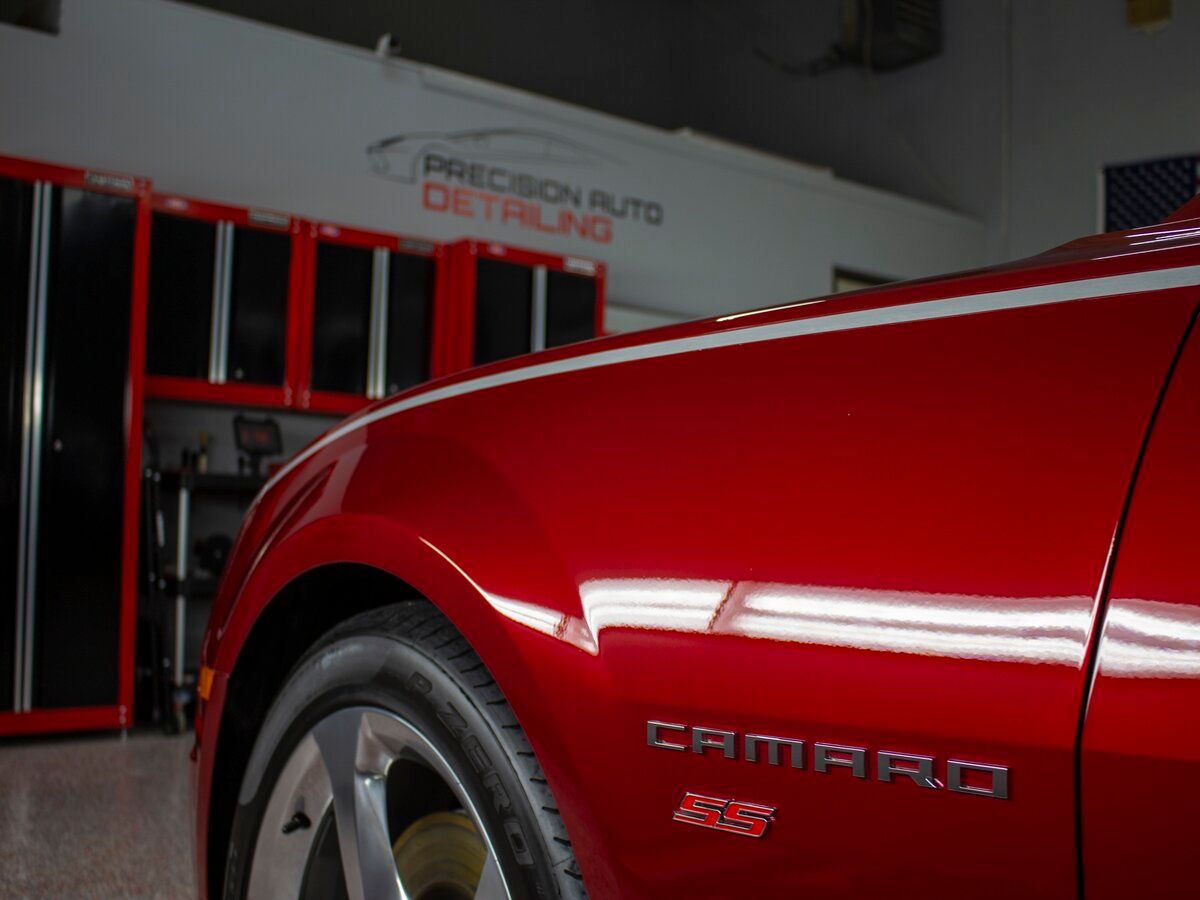
Proper cleansing techniques are essential for preserving the quality and durability of the paint protection film (PPF) on your vehicle. The PPF acts as a shield, protecting your vehicle's paintwork from scratches, rock chips, and other environmental factors. By following the right cleaning methods, you can enhance the appearance and lifespan of the film.
To begin, it's important to note that abrasive cleaning methods, such as using automatic car washes with harsh brushes or scrubbing the film vigorously, should be avoided at all costs. These actions can cause damage to the PPF and compromise its protective capabilities. Instead, opt for gentle cleaning techniques to ensure a safe and effective process.
One recommended cleaning technique is using a two-bucket method: one bucket containing clean water and another with a mild soap solution specifically designed for car surfaces. Rinse the film with water to eliminate loose grime and debris. Then, using a soft microfiber wash mitt or sponge, gently apply the soapy solution and clean the PPF in straight motions. Avoid circular or aggressive scrubbing motions that could potentially harm the film.
After thoroughly washing the PPF, rinse it again with clean water to remove any remaining soap residue. Make sure to use a steady stream of water without applying excessive pressure. Finally, dry the film using a clean microfiber towel or chamois cloth by gently patting it dry instead of rubbing.
Following these proper cleaning techniques will ensure that your car's paint protection film remains in optimal condition. However, it is of equal importance to select appropriate cleaning products to avoid any potential injury to the film.
Choosing Appropriate Cleaning Products for Your Automobile's Paint Protection Film
When selecting cleansing products for your car's paint protection film, it is essential to select those that are specially formulated for use on PPF. Using unsuitable or harsh cleaners can deteriorate the protective properties of the film and potentially cause discoloration or other forms of damage. To begin, let's consider some key factors to keep in mind when choosing cleaning products for your car's paint protection film.
- One essential factor is to opt for pH-neutral cleaning solutions that are free from wax, petroleum distillates, or abrasive chemicals. These types of cleaners are designed to be gentle on PPF while effectively removing dirt, grime, and insects without causing harm.
- Look for products that are explicitly labeled as safe for use on paint protection film. Manufacturers often provide recommendations regarding compatible cleaning products that work well with their specific brand of PPF. By adhering to these suggestions, you can ensure compatibility and minimize any potential risks. For instance, if you have chosen a particular brand of PPF from Precision Auto Protective Films & Ceramic Coatings, reach out to their knowledgeable team for recommendations on suitable cleaning products that complement their paint protection film.
- it is recommended to avoid using products containing dyes and intense fragrances. These additives can potentially have adverse effects on the PPF, including discoloration or chemical reactions that compromise its protective qualities. Opting for fragrance-free and dye-free cleaning products provides an added layer of caution when maintaining your vehicle's PPF.
By following these guidelines and selecting appropriate cleaning products, you can ensure that your car's paint protection film is properly cared for and maintained, allowing it to fulfill its purpose of safeguarding your vehicle's paintwork.
Best Practices for Applying Wax and Sealants to Your Car's Paint Protection Film
When it comes to applying wax and sealants to your car's PPF, following the correct procedures is crucial to ensuring optimal results. Here are some best practices:
- Start with a thorough cleaning. Before applying any wax or sealant, ensure that the PPF is clean and free from dirt, debris, and contaminants. Use a gentle automotive soap or PPF-specific cleaner along with a clean microfiber sponge or cloth. Rinse thoroughly and dry the surface completely before proceeding.
- Apply products sparingly. It's important to remember that a little goes a long way when applying wax or sealant. Use a small amount of product and spread it evenly over the PPF using a soft foam applicator pad or a microfiber cloth. Apply in circular motions, working one section at a time.
- Allow curing time: Different wax and sealant products have varying curing times, so follow the manufacturer's instructions carefully. Avoid exposing the treated surface to water or extreme weather conditions until the product has fully cured.
- Regular maintenance: To maintain the protective properties of the wax or sealant, regular washing and reapplication might be necessary. Follow a suitable maintenance regimen that includes gentle washing techniques and periodic reapplication of wax or sealant to keep your PPF looking its best.
Remember, if you're unsure about proper application techniques or product selection, it's always best to consult professionals who specialize in PPF maintenance. They can guide you in choosing the right products and provide expert advice on achieving optimal results.
Maintenance, Repairs, and Long-Term Care Strategies
Taking care of your car's paint protection film is essential to maintaining its effectiveness and prolonging its lifespan. Here are some key strategies you can employ for maintenance, repairs, and long-term care:
- Regular Maintenance: Regularly wash your vehicle using a mild automotive shampoo and a soft microfiber cloth or sponge. Avoid using harsh chemicals or abrasive materials that could damage the film. Rinse thoroughly to remove any dirt or debris that can accumulate on the surface.
- Avoid Automatic Car Washes: While convenient, automatic car washes that use brushes or harsh chemicals can cause swirl marks or scratches on the film. Opt for hand washing or touchless car washes instead for a safer and gentler cleaning experience.
But what if your paint protection film gets damaged? Don't worry, there are repair options available:
- Minor Scratches: For minor scratches or scuffs on the film, you can try using automotive polishing compounds designed specifically for paint protection films. Apply a small amount of compound to a clean microfiber cloth and gently rub it over the affected area in circular motions. This should help reduce the appearance of scratches.
- Deeper Scratches or Damaged Areas: If the damage is more severe, it's best to consult a professional paint protection film installer or automotive detailing expert. They have the expertise and specialized tools to repair or replace damaged sections of the film without compromising its overall integrity.
Lastly, let's explore some long-term care strategies to ensure the longevity of your car's paint protection film:
- Avoid Parking in Direct Sunlight for Extended Periods: Prolonged exposure to direct sunlight can cause fading or discoloration of the film over time. Whenever possible, park your vehicle in shaded areas or use a car cover to shield it from the sun's harmful UV rays.
- Regular Inspections: Periodically inspect your paint protection film for any signs of lifting, peeling, or damage. Promptly addressing any issues can prevent further damage and preserve the integrity of the film.
- Frequent Waxing: Applying a high-quality wax specifically formulated for use on paint protection films can help enhance their performance and extend their lifespan. The wax adds an extra layer of protection against environmental factors, giving your film added durability.
Advantages of Using a Paint Protection Film on Your Car
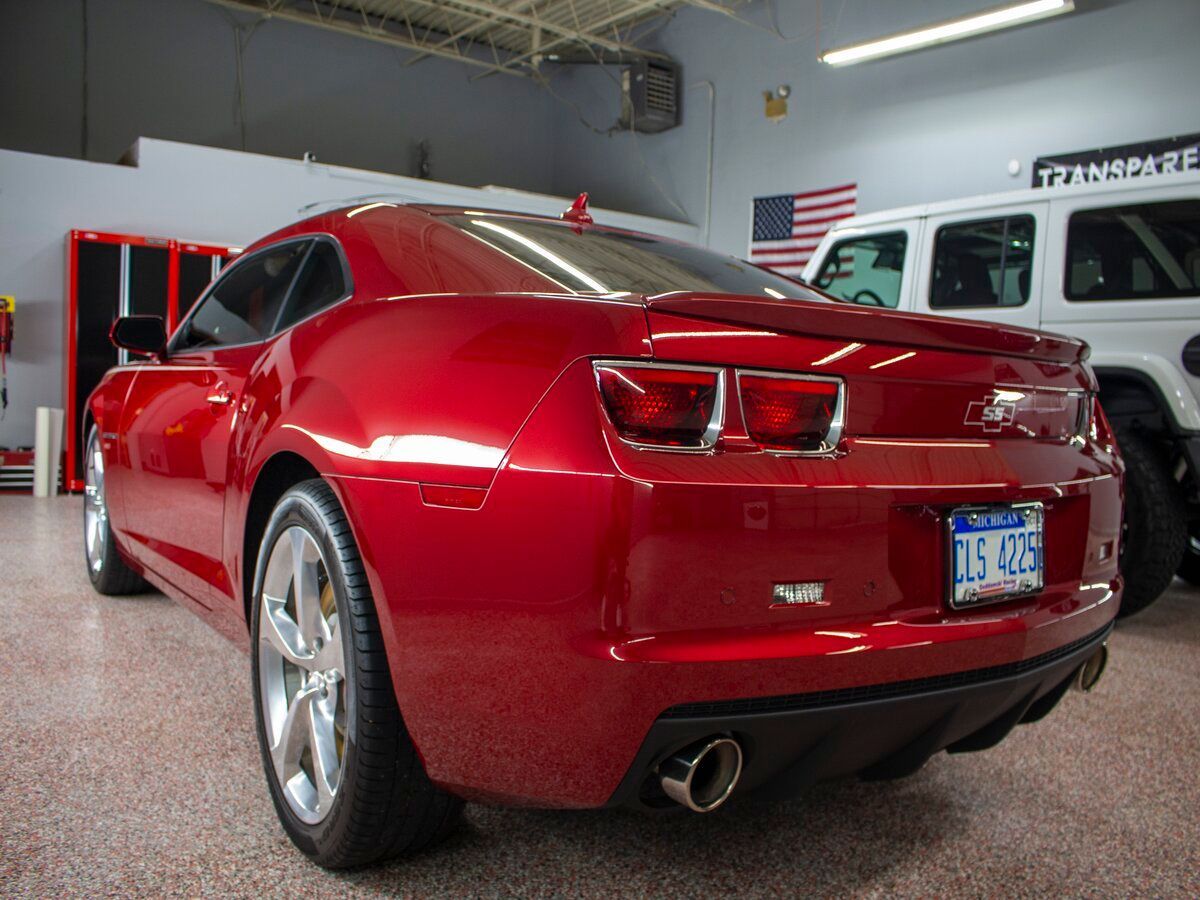
Investing in paint protection film for your car comes with numerous advantages that extend beyond just preserving its appearance. Let's explore some key benefits you can expect:
- Protection Against Road Debris and Environmental Factors: Paint protection film acts as a barrier between your car's paintwork and external elements such as rocks, sand, insects, bird droppings, and harsh weather conditions. It helps shield the surface from scratches, chips, stains, and fading caused by UV rays.
- Self-Healing Properties: Many modern paint protection films have self-healing properties that enable minor scratches to disappear over time when exposed to heat. This means that superficial marks from everyday wear and tear will fade away on their own, keeping your car looking pristine.
- Preservation of Resale Value: By maintaining the condition of your vehicle's paintwork through the use of a paint protection film, you're helping to retain its resale value. A well-maintained exterior free of unsightly damages will make a positive impression on potential buyers.
- Ease of Cleaning and Maintenance: Paint protection film resists staining and is easy to clean compared to bare paintwork. With its smooth surface, dirt and grime can be washed away effortlessly without damaging the film or underlying paint.
- Long-Term Cost Savings: While the initial installation cost of paint protection film may seem like an investment, it can save you money in the long run. The film acts as a sacrificial layer, absorbing the impact of any potential damage that would otherwise require costly repairs or repainting.
Why Choose Precision Auto Protective Films & Ceramic Coatings for Paint Protection Film Services?
At Precision Auto Protective Films & Ceramic Coatings, our commitment to excellence extends beyond our products. Our partnership with Llumar, our self-healing PPF technology, and our expert installation make us the trusted experts in paint protection film services. We're dedicated to delivering top-quality
PPF solutions that cater to your specific needs. Our attention to detail, exceptional customer service, and unwavering commitment to providing you with the best protection for your vehicle set us apart as trusted experts in the field. Book now!
Quick Links
Our Location
43000 W Nine Mile Road, Suite 307
Novi, MI 48375
United States
Contact Us
Phone: (248) 550-4363
Email: info@precisionautonovi.com
Service Areas
This website was designed by the team at Detailers Roadmap, a platform developed for detailing operators across the globe.
All Rights Reserved | 8bitcreative, LLC | Precision Auto Protective Films & Ceramic Coatings


